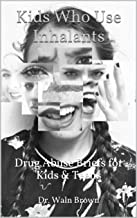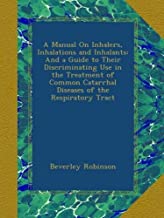INHALANT USE DISORDER
What is inhalant use disorder? It is a problem that can develop when people deliberately breathe in the fumes of various substances, in order to experience intoxication. Basically, the disorder develops in people who frequently use inhalants as a recreational drug.
Overview from Wikipedia: Inhalant Use Disorder
Age Onset: Children and young teenagers.
Symptoms: Since the inhalants (even household chemicals) are heavier than oxygen when breathing, there is frequently brain damage or death through suffocation.
Causes: Specifically for inhaling glue, 38 U. S. states prohibit glue sales when inhaling is anticipated.
Youtube Video: Inhalant Use Disorder
Amazon or Library Book: Kids Who Use Inhalants
Amazon or Library Book:
A Manual of Inhalers, Inhallations and Inhalants
Click the book to link or order from Amazon.
Click the book to link or order from Amazon.


